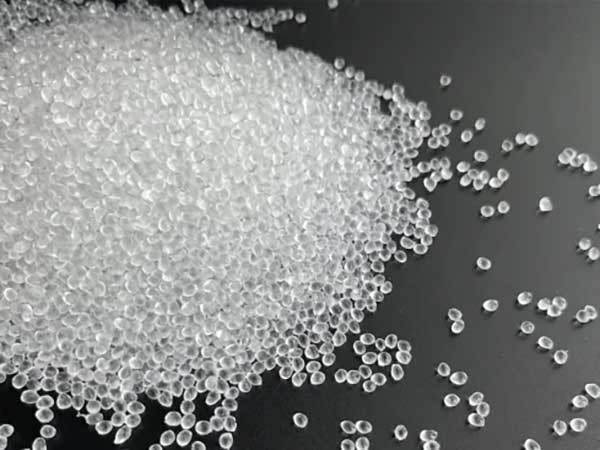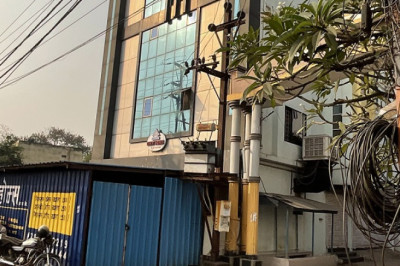views
The plastics industry is undergoing a significant transformation, driven by innovations in materials science that are reshaping how products are made, used, and recycled. One of the most exciting materials at the forefront of this evolution is polyolefin elastomer (POE). This versatile material is influencing multiple sectors, from packaging to automotive manufacturing, due to its unique properties and wide range of applications.
What Are Polyolefin Elastomers?
Polyolefin elastomers belong to the family of thermoplastic elastomers (TPEs), which combine the qualities of plastic and rubber. These elastomers are produced through the polymerization of ethylene with alpha-olefins like butene, octene, or hexene. The result is a material that retains the flexible and elastic properties of rubber while also possessing the moldability and processing advantages of plastics.

Key characteristics of POE include:
Elasticity: They exhibit rubber-like elasticity, which makes them ideal for applications requiring flexibility and resilience.
Thermal Stability: POEs maintain their properties over a broad temperature range, making them suitable for both hot and cold environments.
Durability: Their excellent impact resistance and toughness contribute to their use in demanding industrial applications.
Key Applications of Polyolefin Elastomers
The versatility of POE is driving its widespread adoption across numerous industries. Some of the most significant applications include:
1. Automotive Industry
In the automotive sector, POE elastomer is increasingly used as a lightweight, durable alternative to traditional materials like rubber and thermoset plastics. Its flexibility and ability to withstand extreme temperatures make it perfect for:
Seals and gaskets: POEs can be used in areas where high flexibility and sealing properties are required.
Interior trim: As an environmentally friendly option, POEs reduce vehicle weight, which improves fuel efficiency and reduces emissions.
Bumpers and impact-resistant parts: The excellent energy absorption and impact resistance of POEs are key in enhancing vehicle safety and longevity.
2. Packaging
In packaging, POE's unique characteristics provide important advantages:
Film and Flexible Packaging: POE offers superior sealing properties, making it ideal for films used in food and consumer goods packaging. It also enhances the puncture resistance and toughness of films.
Stretch Film: For packaging solutions requiring stretchability and flexibility, POEs provide increased elasticity without compromising structural integrity.
3. Consumer Goods
For everyday products like footwear, toys, and sports equipment, POEs deliver flexibility and durability. In footwear, POEs are commonly used in midsoles to provide enhanced cushioning and shock absorption. Their soft touch, resilience, and non-slip properties are ideal for many other consumer goods, ensuring that they remain in high demand across various markets.
4. Medical Devices
In the medical field, POEs are increasingly utilized for flexible tubing, medical bags, and other disposable products. Their ability to be sterilized, coupled with their flexibility and resistance to chemicals, makes them suitable for demanding healthcare environments. POE also meets regulatory standards for medical applications, offering a safer alternative to PVC and latex.
Advantages of Polyolefin Elastomers in the Plastics Industry
Polyolefin elastomers are transforming the plastics industry by offering a combination of advantages that set them apart from traditional materials. These include:
1. Enhanced Sustainability
The growing focus on sustainability has driven the demand for eco-friendly materials, and POEs offer a more sustainable option than many conventional plastics. They are fully recyclable and can be processed multiple times without a significant loss in properties. Additionally, POEs can be blended with other plastics to improve recyclability and mechanical performance, reducing the reliance on non-recyclable materials.
2. Energy Efficiency
As thermoplastics, POEs can be processed using less energy compared to traditional rubber-based materials. Their ability to be molded and extruded at lower temperatures makes manufacturing processes more energy-efficient, helping industries reduce their carbon footprint.
3. Improved Material Properties
Compared to traditional elastomers, POEs exhibit superior resistance to wear and tear, high-impact strength, and better performance under mechanical stress. These advantages make them ideal for industries requiring durable, long-lasting materials, such as automotive and industrial manufacturing.
4. Versatility in Applications
The ability to modify POE formulations allows manufacturers to tailor the material's properties to suit specific requirements. Whether in softness, hardness, or elasticity, the versatility of POEs enables their use across a wide range of applications, from flexible packaging to rigid automotive parts.
Challenges and Future Prospects
Despite the numerous advantages of POEs, challenges remain in their widespread adoption. One challenge is the higher production cost relative to traditional polyolefins like polyethylene and polypropylene. However, advances in production technologies and economies of scale are expected to bring down costs in the coming years.
The future of polyolefin elastomers in the plastics industry looks promising. Ongoing research and development are exploring new ways to enhance the performance and sustainability of POEs, potentially paving the way for even more innovative applications. As industries increasingly focus on environmental sustainability, POEs offer a versatile, durable, and eco-friendly solution that meets the needs of modern manufacturing and consumer demands.
Polyolefin elastomers are reshaping the plastics industry, offering an innovative material solution that blends the best properties of rubber and plastic. From automotive components to flexible packaging, POEs are playing a crucial role in creating more durable, sustainable, and high-performance products. As the demand for eco-friendly, versatile materials continues to grow, POEs are set to drive further transformation across a wide range of industries, marking a significant shift in the future of plastics.




















Comments
0 comment